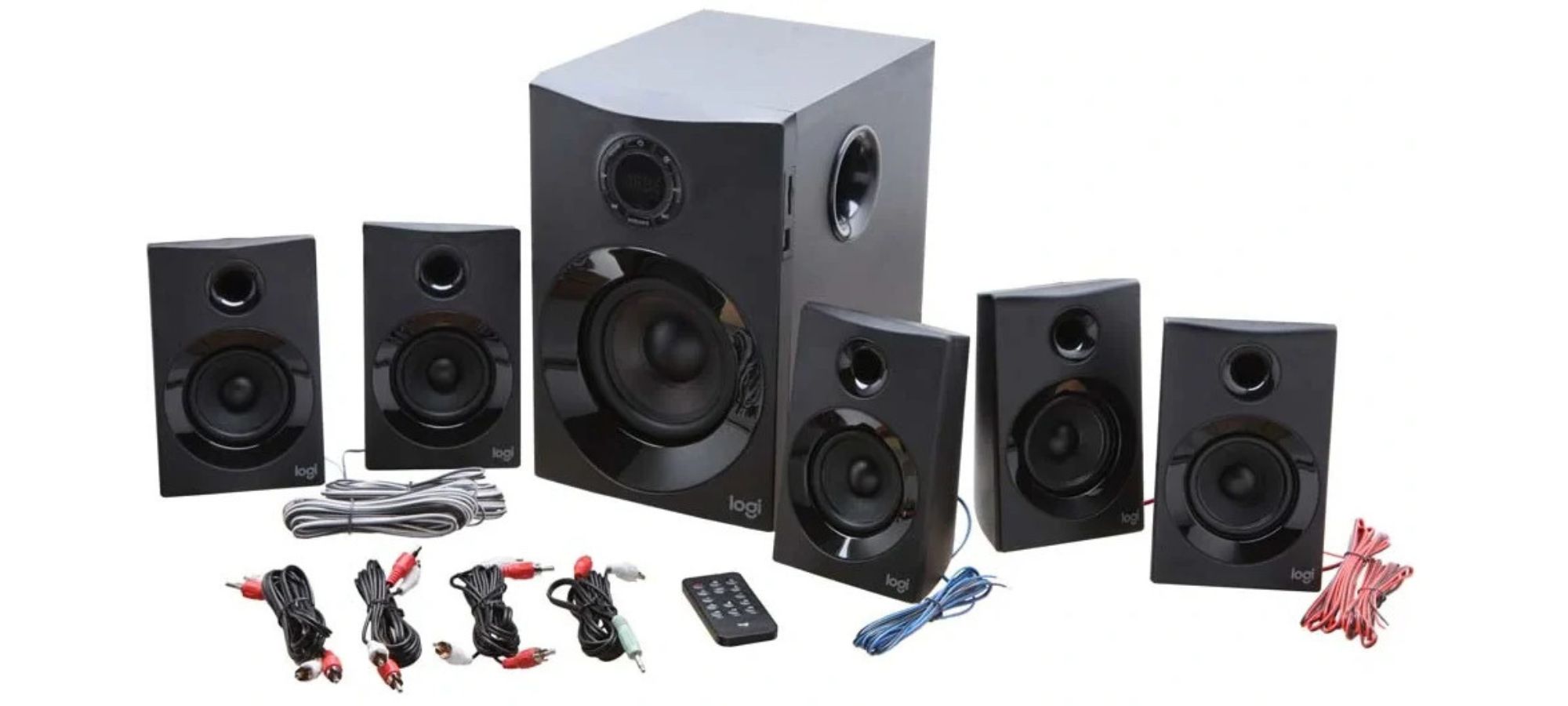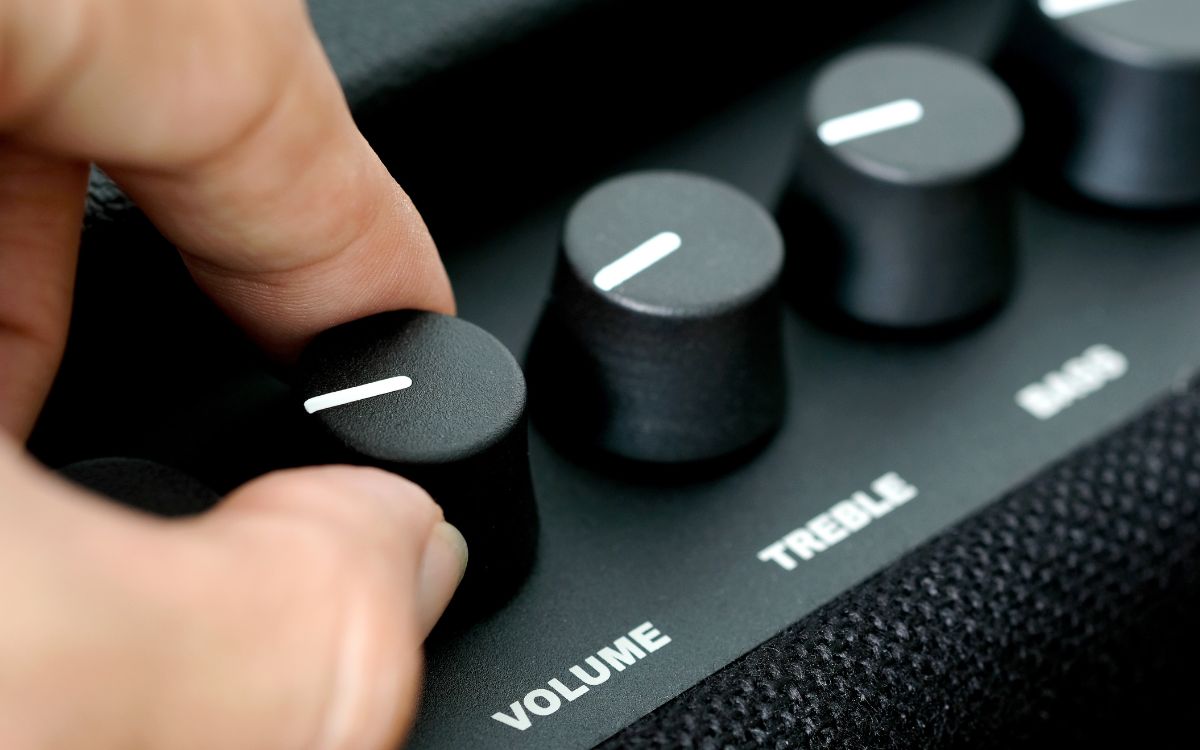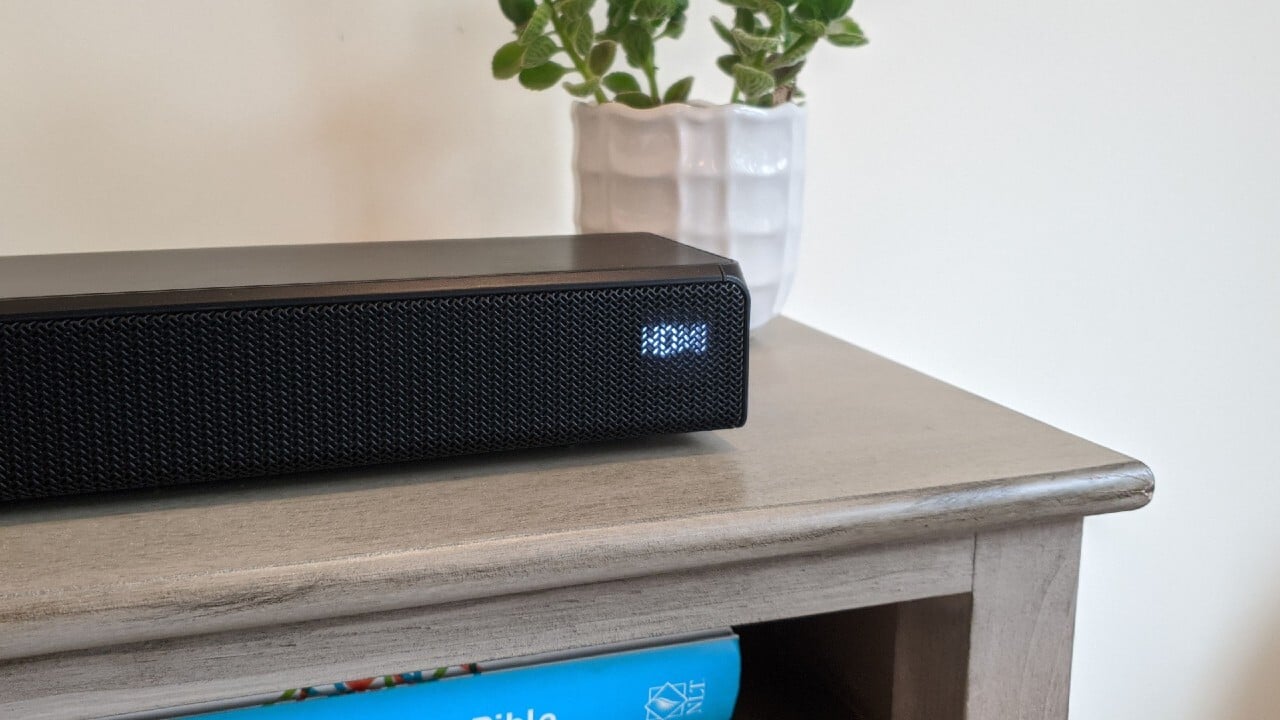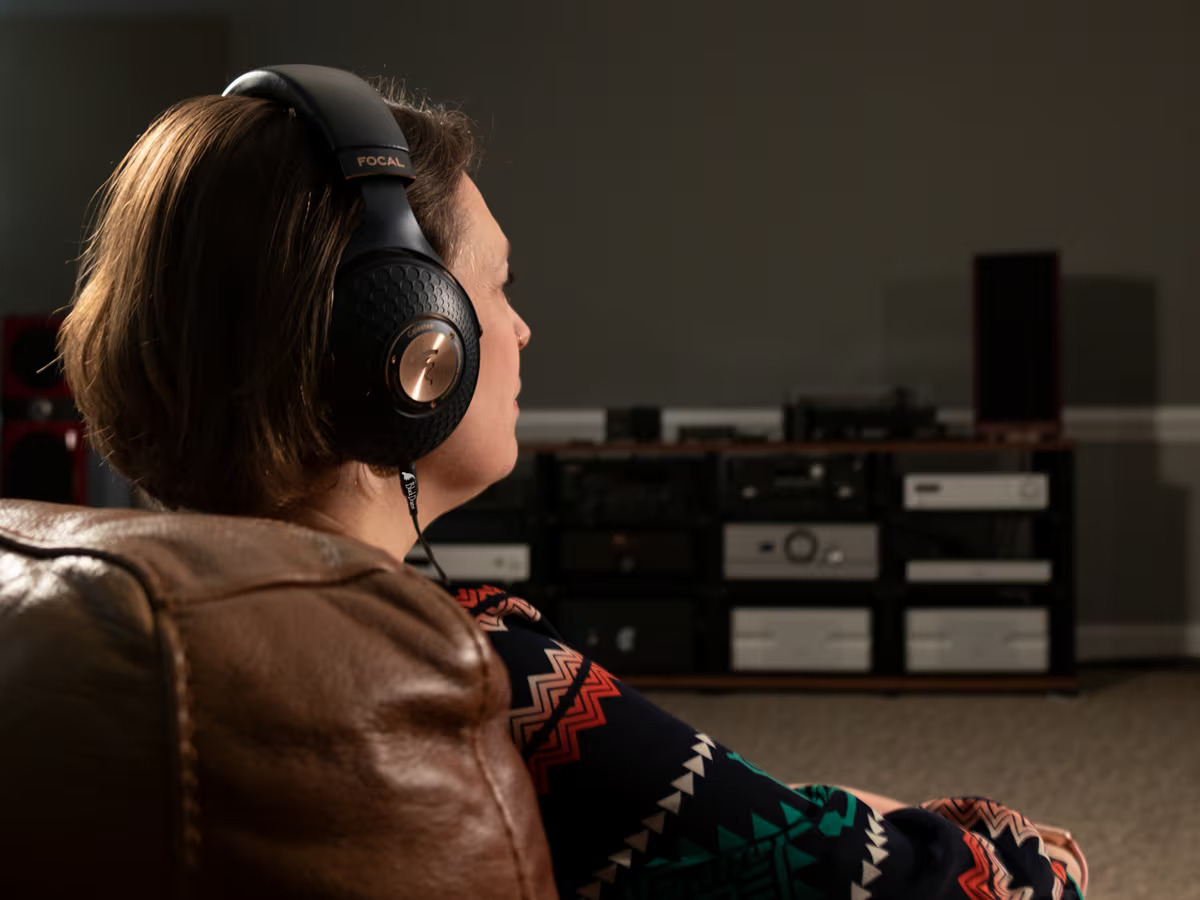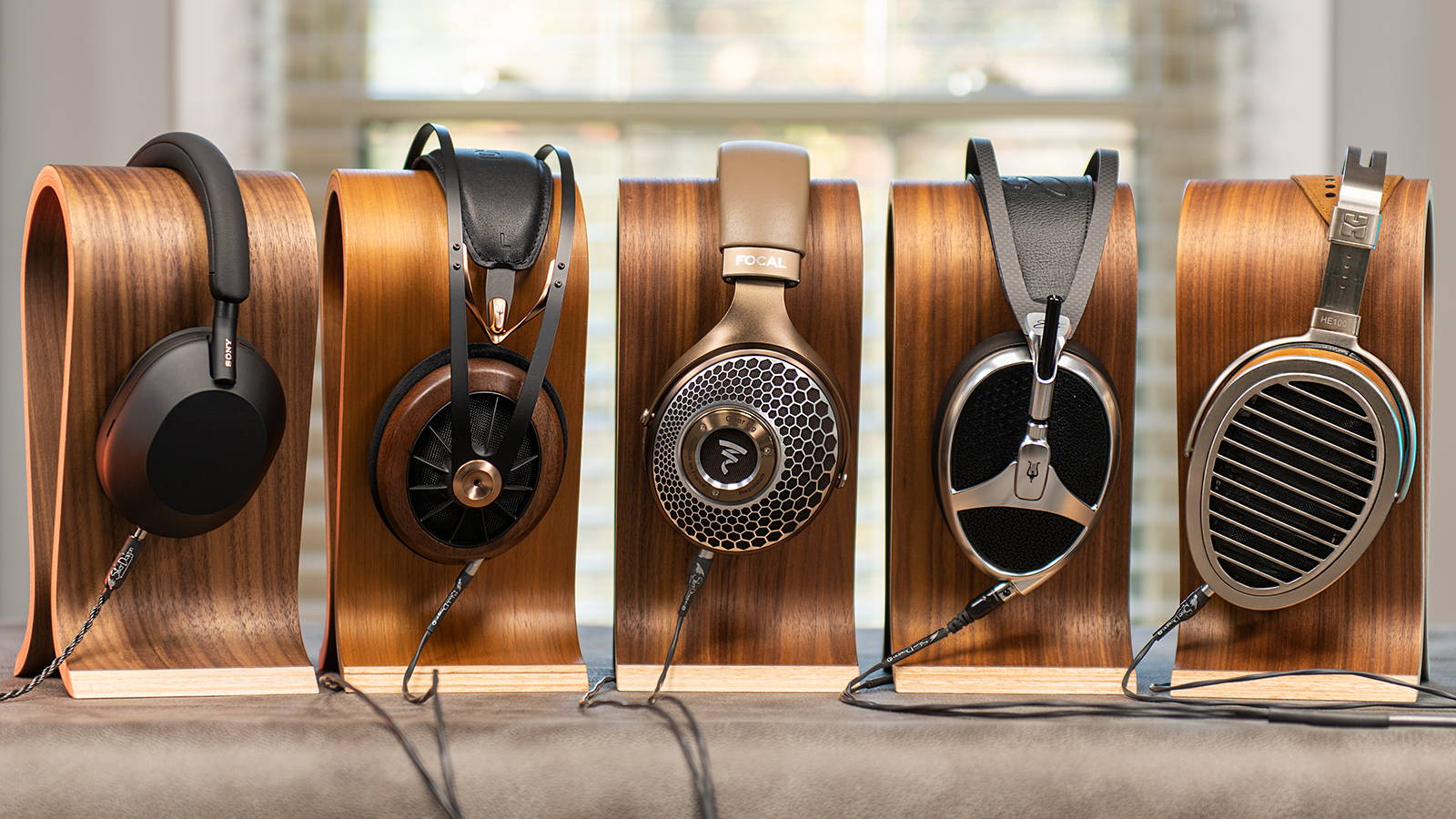Home>Production & Technology>Audiophile>Why Buy An Audiophile-Grade Sound Card


Audiophile
Why Buy An Audiophile-Grade Sound Card
Modified: February 19, 2024
Enhance your audio experience with an audiophile-grade sound card. Immerse yourself in high-quality, crystal-clear sound like never before. Upgrade your audio setup today!
(Many of the links in this article redirect to a specific reviewed product. Your purchase of these products through affiliate links helps to generate commission for AudioLover.com, at no extra cost. Learn more)
Table of Contents
- Introduction
- What is an Audiophile-Grade Sound Card?
- Benefits of Audiophile-Grade Sound Cards
- Enhanced Audio Quality
- Noise Reduction and Distortion Prevention
- Customization and Control
- Compatibility with High-Quality Audio Formats
- Improved Gaming and Multimedia Experience
- Factors to Consider Before Buying an Audiophile-Grade Sound Card
- Price Range and Budget
- System Requirements and Compatibility
- Connectivity Options
- Brand Reputation and Customer Reviews
- Conclusion
Introduction
Welcome to the world of high-fidelity audio! If you’re a true audio enthusiast, you understand the importance of having the best possible sound quality when listening to music or watching movies. While many people settle for the built-in sound cards on their computers or laptops, true audiophiles know that investing in an audiophile-grade sound card is the key to unlocking an immersive and superior audio experience.
An audiophile-grade sound card is a specialized piece of hardware designed to deliver exceptional audio performance. Unlike standard sound cards, which are often built with cost and efficiency in mind, audiophile-grade sound cards are designed with precision and attention to detail, offering the highest level of audio quality and customization options.
In this article, we’ll explore the benefits of investing in an audiophile-grade sound card and why it’s worth considering for any audiophile or aspiring audio professional. We’ll also discuss the factors to consider before purchasing an audiophile-grade sound card to ensure you make the right choice for your needs and budget.
So, whether you’re a music lover, a gamer, or a professional in the audio industry, let’s dive in and discover why an audiophile-grade sound card is a worthy addition to your setup.
What is an Audiophile-Grade Sound Card?
An audiophile-grade sound card is a specialized component designed to deliver exceptional audio quality and performance. It is a hardware device that connects to your computer’s motherboard and provides enhanced audio capabilities. These sound cards are specifically built for audiophiles, who have a deep appreciation for high-quality sound reproduction and a desire for the best possible audio experience.
Unlike the standard sound cards that come integrated with most computers, which are often focused on cost-effectiveness rather than audio fidelity, audiophile-grade sound cards are designed with a clear emphasis on delivering superior audio performance. They are built using high-quality components and undergo rigorous testing and quality control to ensure optimal sound reproduction.
Audiophile-grade sound cards offer a range of features and technologies that contribute to their exceptional audio performance. They often include high-quality digital-to-analog converters (DACs) and analog-to-digital converters (ADCs) to ensure accurate and detailed audio reproduction. These DACs and ADCs are crucial in converting digital audio signals to analog signals and vice versa.
Furthermore, audiophile-grade sound cards often utilize advanced circuitry and signal processing algorithms to minimize noise and distortion, delivering cleaner and more precise audio. They may also provide advanced audio customization options, including fine-tuning of various audio parameters such as EQ settings, surround sound effects, and more.
It’s worth noting that while many modern motherboards come with decent built-in audio solutions, they are often unable to match the level of audio quality and customization options provided by dedicated audiophile-grade sound cards. These sound cards not only enhance the audio quality of your music and movies but also elevate your gaming experience by delivering immersive soundscapes and allowing you to hear subtle details that would otherwise be missed.
Overall, an audiophile-grade sound card is an essential component for anyone who values high-fidelity audio reproduction. Whether you’re a music enthusiast, a gamer, or a professional in the audio industry, investing in an audiophile-grade sound card can significantly enhance your audio experience and elevate it to a new level of excellence.
Benefits of Audiophile-Grade Sound Cards
Investing in an audiophile-grade sound card can have a profound impact on your audio experience. These specialized components offer a range of benefits that elevate the quality and detail of your sound. Here are some of the key advantages of using an audiophile-grade sound card:
- Enhanced Audio Quality: One of the primary benefits of an audiophile-grade sound card is its ability to deliver exceptional audio quality. These sound cards often feature high-quality digital-to-analog converters (DACs), which ensure accurate and precise audio reproduction. With a dedicated sound card, you can experience a wider dynamic range, richer tonal balance, and improved overall clarity in your audio playback.
- Noise Reduction and Distortion Prevention: Audiophile-grade sound cards are designed to minimize unwanted noise and distortion, resulting in a cleaner and more immersive audio experience. These sound cards employ advanced shielding and circuitry to reduce electromagnetic interference and signal degradation, allowing you to enjoy your music or movies with minimal audio artifacts.
- Customization and Control: Unlike built-in sound cards, audiophile-grade sound cards often provide extensive customization options. They allow you to fine-tune audio settings, such as equalization (EQ), surround sound effects, and virtualization, to suit your personal preferences. This level of control enables you to tailor the audio output to your liking and achieve the desired sound signature.
- Compatibility with High-Quality Audio Formats: Audiophile-grade sound cards are designed to support and decode high-resolution audio formats, such as FLAC (Free Lossless Audio Codec), DSD (Direct Stream Digital), and AIFF (Audio Interchange File Format). These formats preserve the full range of audio information and deliver better sound quality compared to compressed formats like MP3. With an audiophile-grade sound card, you can fully experience the nuances and details of high-resolution audio recordings.
- Improved Gaming and Multimedia Experience: Gamers can benefit greatly from an audiophile-grade sound card. These sound cards offer enhanced spatial sound reproduction, allowing for precise positioning of in-game audio cues. This immersive audio experience can provide a competitive edge in games where sound plays a crucial role, such as first-person shooters. Additionally, audiophile-grade sound cards enhance the audio quality of multimedia content, making movies, TV shows, and online videos more immersive and enjoyable.
In summary, an audiophile-grade sound card delivers superior audio quality, minimizes noise and distortion, offers customization options, supports high-quality audio formats, and enhances gaming and multimedia experiences. These benefits make it a worthwhile investment for anyone seeking the best possible audio reproduction.
Enhanced Audio Quality
One of the primary reasons audiophile-grade sound cards are highly sought after is their ability to deliver enhanced audio quality. These specialized sound cards are designed to reproduce sound with utmost accuracy and fidelity, offering a significant improvement over standard built-in sound cards.
A major factor contributing to the enhanced audio quality of audiophile-grade sound cards is the superior digital-to-analog converter (DAC) they employ. The DAC is responsible for converting digital audio signals into analog signals that can be amplified and played through your headphones or speakers. Audiophile-grade sound cards use high-quality DACs with advanced signal processing algorithms, resulting in more precise and lifelike audio reproduction.
Furthermore, audiophile-grade sound cards often have higher bit depth and sample rates, allowing them to capture and reproduce a greater range of audio frequencies and details. This increased resolution translates to a more immersive and realistic audio experience, enabling you to hear subtle nuances and textures in your music that may have been previously obscured.
The superior audio quality of audiophile-grade sound cards is particularly noticeable when listening to lossless audio formats, such as FLAC or WAV files. These formats preserve the original audio data without any compression, ensuring that every detail of the music is faithfully rendered. With an audiophile-grade sound card, you can fully experience the dynamic range, tonal balance, and intricate nuances of high-quality recordings.
Additionally, the output stage of an audiophile-grade sound card is meticulously designed to minimize interference and distortion, further enhancing the audio quality. The components used in these sound cards, such as capacitors and op-amps, are carefully chosen for their low noise and high performance, ensuring clean and detailed audio output.
Whether you’re an audiophile who appreciates the fine details in music, a professional in the audio industry who requires accurate monitoring, or simply someone who wants the best possible audio experience, an audiophile-grade sound card is an excellent investment. It elevates the audio quality of your computer, allowing you to fully immerse yourself in the music, movies, and games you enjoy.
Noise Reduction and Distortion Prevention
Another significant advantage of audiophile-grade sound cards is their ability to reduce noise and prevent distortion. These sound cards are designed with sophisticated circuitry and advanced components to ensure a clean and accurate audio signal, enhancing your overall listening experience.
One common issue with standard built-in sound cards is the susceptibility to electromagnetic interference (EMI) and radio frequency interference (RFI), which can introduce unwanted noise into the audio signal. However, audiophile-grade sound cards are built with improved shielding and grounding techniques to minimize the impact of external interference, resulting in a quieter audio output.
In addition to reducing external interference, audiophile-grade sound cards also employ measures to prevent internal noise generated within the card itself. The components used in these sound cards are carefully selected for their low noise characteristics, and additional circuitry is implemented to suppress any noise generated during signal processing.
Distortion is another common issue that can degrade the audio quality. Audiophile-grade sound cards utilize high-quality analog-to-digital converters (ADCs) and digital-to-analog converters (DACs) with low distortion levels. These components ensure that the audio signals are accurately reproduced without introducing additional harmonic or intermodulation distortion.
Moreover, the meticulous design and engineering of audiophile-grade sound cards contribute to minimizing nonlinear distortions and maintaining a linear frequency response. This results in faithful audio reproduction, allowing you to hear your music as the artist intended it to be heard.
By reducing noise and preventing distortion, audiophile-grade sound cards offer a significant improvement in audio clarity and detail. You’ll be able to enjoy your favorite music with a lower noise floor, allowing you to perceive even the finest details and subtleties in the recording. Whether it’s the delicate decay of a guitar string or the subtle nuances of a vocalist’s performance, the noise reduction capabilities of an audiophile-grade sound card ensure that nothing detracts from the purity of the sound.
For audiophiles and professionals in the audio field who demand the utmost accuracy and fidelity, a high-quality sound card is an essential component. It provides a clean and pristine audio signal, allowing you to appreciate your music, movies, and other multimedia content without any distractions or distortion.
Customization and Control
A significant advantage of audiophile-grade sound cards is the level of customization and control they offer over your audio experience. These sound cards provide you with the tools to fine-tune various audio parameters, allowing you to tailor the sound output to your personal preferences.
One of the key customization options provided by audiophile-grade sound cards is equalization (EQ). EQ allows you to adjust the balance of different frequency ranges in the audio spectrum to suit your preferences or compensate for the characteristics of your headphones or speakers. Whether you prefer a boosted bass response, a more prominent midrange, or a brighter treble, an audiophile-grade sound card gives you the flexibility to achieve your desired sound signature.
In addition to EQ, many audiophile-grade sound cards offer additional audio enhancement features. These may include surround sound effects, virtualization, and room correction technologies. Surround sound effects simulate a multi-speaker setup, allowing you to experience immersive audio in movies and games. Virtualization technology enhances the realism of headphone audio by creating a more spacious and natural soundstage. Room correction technologies analyze the acoustic properties of your listening environment and apply adjustments to compensate for any anomalies, ensuring more accurate audio reproduction.
Furthermore, audiophile-grade sound cards often come with software interfaces that provide a user-friendly control panel. Through this control panel, you can easily adjust audio settings, switch between different audio profiles, and customize various aspects of the sound card’s performance. This level of control allows you to create multiple audio presets tailored for different activities, such as gaming, music listening, or watching movies.
Another advantage of customization options is their usefulness for professionals in the audio industry. Musicians, audio engineers, and producers can benefit from the ability to fine-tune the sound output to accurately monitor their recordings. This level of control ensures that the audio being produced is reproduced faithfully and without any coloration or distortion.
Overall, the customization and control offered by audiophile-grade sound cards provide you with the ability to fully personalize your audio experience. Whether you enjoy tweaking audio settings to match your preferences or you need precise control for professional applications, an audiophile-grade sound card gives you the power to shape the sound to your liking.
Compatibility with High-Quality Audio Formats
Audiophile-grade sound cards excel not only in delivering superior audio quality but also in their compatibility with high-quality audio formats. These sound cards are designed to support and decode various high-resolution audio formats, ensuring that you can fully appreciate the full range of sonic details in your music.
High-quality audio formats, such as FLAC (Free Lossless Audio Codec), DSD (Direct Stream Digital), and AIFF (Audio Interchange File Format), preserve the original audio data without any lossy compression. These formats offer better sound quality compared to compressed formats like MP3, as they retain more of the original audio information and provide a more faithful representation of the recording.
An audiophile-grade sound card acts as a bridge between your audio source, such as a computer or media player, and your headphones or speakers. It is equipped with high-quality digital-to-analog converters (DACs) that can handle the higher bit depths and sample rates found in high-resolution audio formats. This means that when you play a high-quality audio file through an audiophile-grade sound card, you can experience the full depth and clarity of the recording.
These high-quality audio formats often contain an abundance of details and nuances that may not be fully appreciated with standard equipment. The precision and accuracy of an audiophile-grade sound card ensure that you can hear these subtle nuances and textures, providing a more immersive and engaging listening experience.
Moreover, audiophile-grade sound cards may also support specialized audio formats used in the professional audio industry. For example, some sound cards are compatible with formats like WAV (Waveform Audio File Format) or AIFC (Audio Interchange File Format Compressed) used in audio production and mastering. This compatibility allows professionals to accurately monitor and manipulate high-quality audio files without any compromise in the sound quality.
Whether you have a collection of high-resolution audio files that you want to enjoy to the fullest or you work with high-quality audio in a professional capacity, an audiophile-grade sound card ensures that you can play these audio formats with the utmost fidelity and clarity.
Overall, the compatibility of audiophile-grade sound cards with high-quality audio formats enables you to fully embrace the richness and detail of your music collection. It allows you to experience your favorite songs as the artists intended, with all the intricacies and nuances preserved in their purest form.
Improved Gaming and Multimedia Experience
An audiophile-grade sound card can greatly enhance your gaming and multimedia experience by providing immersive audio and superior sound quality. Whether you’re a hardcore gamer or a movie enthusiast, investing in an audiophile-grade sound card can take your entertainment to a whole new level.
When it comes to gaming, sound plays a crucial role in creating a realistic and immersive experience. Audiophile-grade sound cards offer enhanced spatial sound reproduction, allowing you to accurately locate and identify in-game sounds. This can give you a competitive advantage, especially in multiplayer games where audio cues play a significant part in gameplay. With a high-quality sound card, you’ll be able to hear footsteps approaching from behind, pinpoint the direction of gunfire, and immerse yourself in the game world like never before.
In addition to spatial sound reproduction, audiophile-grade sound cards provide richer and more vibrant audio, allowing you to fully appreciate the audio design in games. The high-quality DACs and ADCs used in these sound cards reproduce the sound effects, dialogues, and music with exceptional detail and clarity. This adds depth and realism to the gaming experience, immersing you in the virtual world and making the gaming sessions more engaging and enjoyable.
Furthermore, audiophile-grade sound cards enhance the audio quality of multimedia content, including movies, TV shows, and online videos. These sound cards have superior audio processing capabilities that ensure accurate sound reproduction and immersive soundscapes. Whether you’re watching an action-packed movie or a visually stunning TV series, the enhanced audio quality provided by an audiophile-grade sound card brings the on-screen action to life, making the viewing experience more captivating and cinematic.
Another advantage of audiophile-grade sound cards is their ability to drive high-impedance headphones. Many gaming headsets and headphones designed for audiophiles have higher impedance levels, requiring dedicated amplification to deliver optimal performance. Audiophile-grade sound cards are equipped with powerful headphone amplifiers that can drive these high-impedance headphones, allowing you to unleash the full potential of your audio gear and appreciate the finer details in the sound.
Overall, investing in an audiophile-grade sound card can significantly improve your gaming and multimedia experience. You’ll enjoy more immersive and realistic soundscapes, precise audio positioning, enhanced dialogues, and music reproduction. Whether you’re a dedicated gamer or a multimedia enthusiast, an audiophile-grade sound card is a worthy addition to your setup, taking your entertainment to new heights.
Factors to Consider Before Buying an Audiophile-Grade Sound Card
Before investing in an audiophile-grade sound card, there are several factors to consider to ensure that you select the right one for your needs and preferences. Here are some essential considerations:
- Price Range and Budget: Determine your budget for a sound card and research the options within that price range. Audiophile-grade sound cards can vary significantly in price, so it’s essential to find the right balance between your budget and the features you desire.
- System Requirements and Compatibility: Check the compatibility of the sound card with your computer’s operating system and hardware specifications. Ensure that your system meets the necessary requirements to properly use the sound card.
- Connectivity Options: Consider the available connectivity options on the sound card. Ensure it has the appropriate interfaces to connect to your headphones, speakers, and other audio devices. Common connections include USB, PCIe, and optical.
- Brand Reputation and Customer Reviews: Research and read reviews about different brands and models of audiophile-grade sound cards. Look for reputable brands known for their quality and customer satisfaction.
- Features and Customization Options: Evaluate the features and customization options offered by the sound card. Look for features like EQ controls, surround sound capabilities, and customizable audio presets, depending on your preferences and needs.
- Audio Performance: Consider the specifications and audio performance of the sound card. Look for details such as signal-to-noise ratio (SNR), total harmonic distortion (THD), and frequency response. Higher values for SNR and lower values for THD are generally desirable.
- Warranty and Support: Check the warranty coverage and customer support provided by the manufacturer. A solid warranty and reliable support can give you peace of mind and assistance if any issues arise.
By carefully considering these factors, you can narrow down your options and make an informed decision when purchasing an audiophile-grade sound card. Remember to prioritize the features and specifications that matter most to you and align with your audio preferences and budget. It’s also worth noting that personal listening tests and subjective preferences should play a significant role in your decision-making process, as individual ears have varying perceptions and preferences when it comes to sound quality.
Take your time to research and compare different models, read reviews, and consider your specific requirements. With a thorough understanding of the factors mentioned above, you’ll be well-equipped to select the right audiophile-grade sound card that will take your audio experience to new heights.
Price Range and Budget
When considering an audiophile-grade sound card, one of the crucial factors to take into account is your price range and budget. Audiophile-grade sound cards can vary significantly in price, so it’s important to determine your budget beforehand and explore the options within that range.
Setting a budget helps you narrow down your choices and ensures that you make a realistic and informed decision. Consider how much you’re willing to spend on a sound card, keeping in mind that higher-priced models generally offer more advanced features and better overall performance.
It’s worth noting that while high-end sound cards often come with a premium price tag, there are still options available for those with a tighter budget. These budget-friendly sound cards can offer noticeable improvements over standard onboard audio, providing a stepping stone into the world of audiophile-grade sound without breaking the bank.
Keep in mind that the price of an audiophile-grade sound card is influenced by various factors, including the quality of components used, the technology employed, and the brand reputation. It’s important to strike a balance between your budget and the features and performance you desire.
Research is essential when determining the price range and budget for a sound card. Look for reputable brands and models within your budget that have positive reviews and feedback from users. Reading customer reviews and professional evaluations can help you gauge the value and performance you can expect at different price points.
Remember that an audiophile-grade sound card is an investment in your audio experience. While it may require a higher initial investment, it can significantly elevate the quality of your audio playback and provide years of enjoyment. Consider your long-term audio goals and whether it makes sense to stretch your budget slightly for a sound card that better aligns with your needs and preferences.
In summary, determining your price range and budget is a critical first step when considering an audiophile-grade sound card. Take the time to research and compare options within your budget, considering factors like brand reputation, customer reviews, and desired features. With a well-defined budget in mind, you can make an informed decision and select a sound card that meets your expectations while providing an enhanced audio experience.
System Requirements and Compatibility
Before purchasing an audiophile-grade sound card, it is crucial to consider the system requirements and compatibility to ensure that the sound card will work seamlessly with your computer setup. Here are some key factors to keep in mind:
Operating System Compatibility: Ensure that the sound card is compatible with your computer’s operating system. Check if drivers and software support are available for your specific OS, whether it’s Windows, macOS, or Linux.
Hardware Compatibility: Verify that your computer’s hardware meets the requirements of the sound card. Check for any specific requirements, such as available PCIe slots or USB ports, as different sound cards may have different connection options.
Power Supply: Some high-end audiophile-grade sound cards may require additional power and may come with separate power connections. Ensure that your power supply unit (PSU) has sufficient connectors and power capacity to support the sound card.
Driver Support: Check for driver support and regular updates from the sound card manufacturer. Updated drivers can improve compatibility, performance, and stability, ensuring a smooth and reliable experience.
Software Compatibility: Consider the software ecosystem that the sound card utilizes. Some sound cards come with their own software that provides additional features, customization options, and control over audio settings. Verify compatibility with any specific software you may want to use, such as digital audio workstations (DAWs) or media players.
Maximum Audio Resolution and Sample Rate: Different sound cards have varying capabilities when it comes to audio resolution and sample rates. Ensure that the sound card supports the maximum resolution and sample rate that you need, especially if you work with high-resolution audio files.
Amplification: Some sound cards have built-in headphone amplifiers designed to drive high-impedance headphones. If you have headphones with higher impedance, check if the sound card can sufficiently power them for optimal performance.
Latency and Real-Time Audio: If you plan to use the sound card for real-time audio processing, such as live recording or virtual instruments, consider the sound card’s latency performance. Look for low-latency drivers and technologies to ensure minimal delay and a smooth, responsive audio experience.
It’s essential to thoroughly research and understand the system requirements before purchasing an audiophile-grade sound card. Reading the product specifications, consulting the manufacturer’s website, and checking user forums or reviews can provide valuable insights into the compatibility and suitability of the sound card for your computer setup.
By considering system requirements and compatibility, you can ensure a seamless integration of the sound card into your system, maximizing its potential and avoiding any potential issues or incompatibilities.
Connectivity Options
When choosing an audiophile-grade sound card, one important consideration is the available connectivity options. The connectivity options determine how the sound card will connect to your computer and audio devices, so it’s crucial to ensure compatibility and flexibility. Here are some key connectivity options to look for:
PCIe: Many audiophile-grade sound cards utilize the PCIe (Peripheral Component Interconnect Express) interface for high-speed data transfer and low latency. PCIe sound cards are installed directly into a PCIe slot on the motherboard, providing a dedicated and reliable connection for optimal audio performance.
USB: USB sound cards are often sought after for their convenience and versatility. They connect to your computer via a USB port and are typically plug-and-play, requiring no additional hardware installation. USB sound cards offer portability and are compatible with a wide range of devices, making them an excellent choice for laptops or systems without available PCIe slots.
Optical/Toslink and Coaxial: These digital audio interfaces transmit audio signals using light (optical) or electrical pulses (coaxial). They are commonly used to connect sound cards to external audio devices such as AV receivers or audio processors. If you plan to connect your sound card to a home theater system or a high-fidelity audio setup, ensure that the sound card has the appropriate optical or coaxial outputs.
Analog Outputs: Look for sound cards with multiple analog output options, such as 3.5mm headphone jacks, RCA jacks, or balanced XLR outputs. These outputs allow you to connect the sound card to various audio devices, including headphones, speakers, amplifiers, or studio monitors. Having a range of analog output options provides greater flexibility for connecting to different systems or devices.
Microphone and Line Inputs: If you plan to use your sound card for recording, ensure it has microphone and line inputs. These inputs allow you to connect microphones, instruments, or other audio sources directly to the sound card. Look for sound cards with preamps and high-quality analog-to-digital converters (ADCs) to achieve professional-quality recordings.
Additional Features: Some sound cards offer additional connectivity options, such as dedicated headphone outputs, surround sound outputs, or MIDI (Musical Instrument Digital Interface) connectors. Consider your specific needs and determine if any additional connectivity features are essential for your audio setup.
It’s crucial to check the compatibility of the sound card’s connectivity options with your existing devices. Ensure that you have the necessary cables and adapters to connect your audio devices to the sound card. Additionally, consider the audio quality and impedance support of the outputs to ensure optimal performance with your headphones or speakers.
By considering the connectivity options of an audiophile-grade sound card, you can choose one that seamlessly integrates into your audio setup, providing the necessary connections for your devices and offering the flexibility you desire.
Brand Reputation and Customer Reviews
When considering an audiophile-grade sound card, it’s important to pay attention to brand reputation and customer reviews. The reputation of the brand and the experiences of other customers can provide valuable insights into the quality, performance, and reliability of the sound card you are considering. Here’s why brand reputation and customer reviews should be factors in your decision-making process:
Reliability and Quality: Reputable brands are often known for their commitment to quality and reliability. They invest in research, development, and quality control to ensure that their products meet high standards. Brands with a strong reputation have a track record of producing sound cards that perform consistently and maintain their functionality over time.
Customer Satisfaction: Customer reviews can offer first-hand experiences and opinions about specific sound card models. Pay attention to reviews that highlight key features, performance, compatibility, and user satisfaction. Positive reviews can give you confidence in the quality and value of the sound card, while negative reviews can highlight potential shortcomings or issues to consider.
Long-Term Support and Updates: Reputable brands often provide timely driver updates, firmware upgrades, and ongoing support for their products. This is important for compatibility with new operating system updates or bug fixes. A brand’s commitment to providing ongoing support demonstrates their commitment to customer satisfaction and ensures that your sound card remains up-to-date and optimized.
Warranty Coverage: The warranty offered by a brand is an essential consideration. A sound card with a solid warranty provides peace of mind and protection against any potential defects or issues. Check the duration and terms of the warranty, as well as the brand’s reputation for honoring warranty claims.
Technical Expertise: Established brands often have a team of experienced engineers and technical experts who ensure that their sound cards meet the stringent requirements of audiophiles. Their expertise in audio engineering and design can translate to superior sound reproduction, advanced features, and overall better performance.
When researching brand reputation and customer reviews, look for reliable sources such as reputable audio publications, customer review platforms, forums, and communities dedicated to audio enthusiasts. Keep in mind that individual preferences and biases may vary, so it’s essential to read a range of reviews to gain a balanced perspective.
Recognizable brands in the audiophile community include companies like Creative, ASUS, Sennheiser, Focusrite, AudioQuest, and many others. These brands have established themselves through years of delivering high-quality audio products and have gained the trust and loyalty of their customers.
By considering brand reputation and customer reviews, you can make an informed decision when selecting an audiophile-grade sound card. A reputable brand with positive customer feedback can give you confidence in the performance, reliability, and customer support of the sound card, ensuring a satisfying audio experience.
Conclusion
Investing in an audiophile-grade sound card is a decision that can greatly enhance your audio experience. These specialized components are designed to deliver exceptional sound quality and provide advanced features and customization options that cater to the needs of audio enthusiasts and professionals.
With an audiophile-grade sound card, you can enjoy enhanced audio quality, with improved clarity, detail, and accuracy. You’ll be able to appreciate the nuances and intricacies of your favorite music, movies, and games like never before.
Additionally, audiophile-grade sound cards offer noise reduction and distortion prevention, ensuring a clean and immersive audio experience. They also provide extensive customization and control options, allowing you to fine-tune your audio settings to match your personal preferences and create your desired sound signature.
Compatibility with high-quality audio formats and superior gaming and multimedia experiences further contribute to the appeal of audiophile-grade sound cards. By supporting high-resolution audio formats and providing realistic audio reproduction in games and multimedia content, these sound cards take your entertainment to another level.
When considering the purchase of an audiophile-grade sound card, it’s important to consider factors such as your budget, system requirements, connectivity options, brand reputation, and customer reviews. These considerations will help you select the right sound card that suits your needs and preferences.
Remember, an audiophile-grade sound card is an investment in your audio enjoyment. It allows you to immerse yourself in a world of high-fidelity audio, where every detail and subtlety is faithfully reproduced. Whether you’re a music lover, a gamer, or a professional in the audio industry, an audiophile-grade sound card is a valuable addition to your setup.
So, take your audio experience to new heights by choosing an audiophile-grade sound card that will unlock the full potential of your audio equipment, and immerse yourself in a realm of superior sound quality and audio precision.

